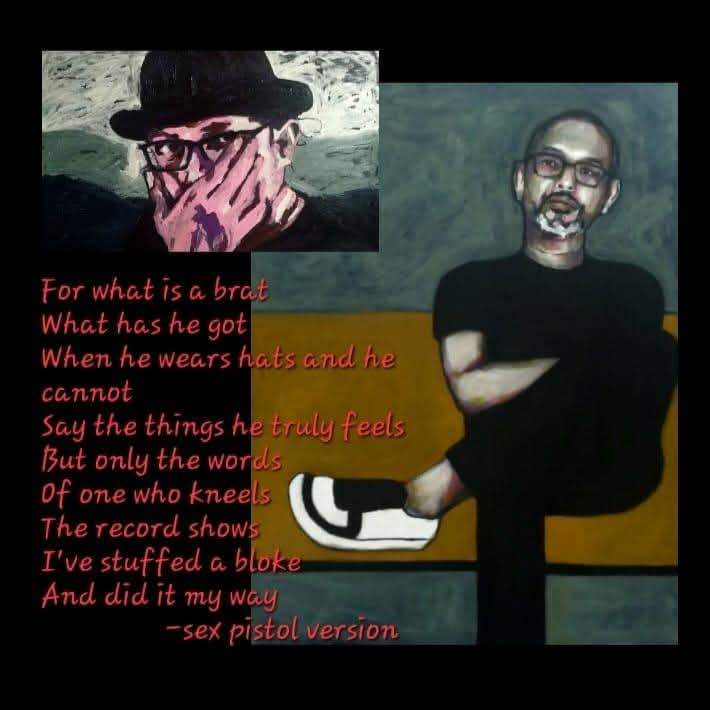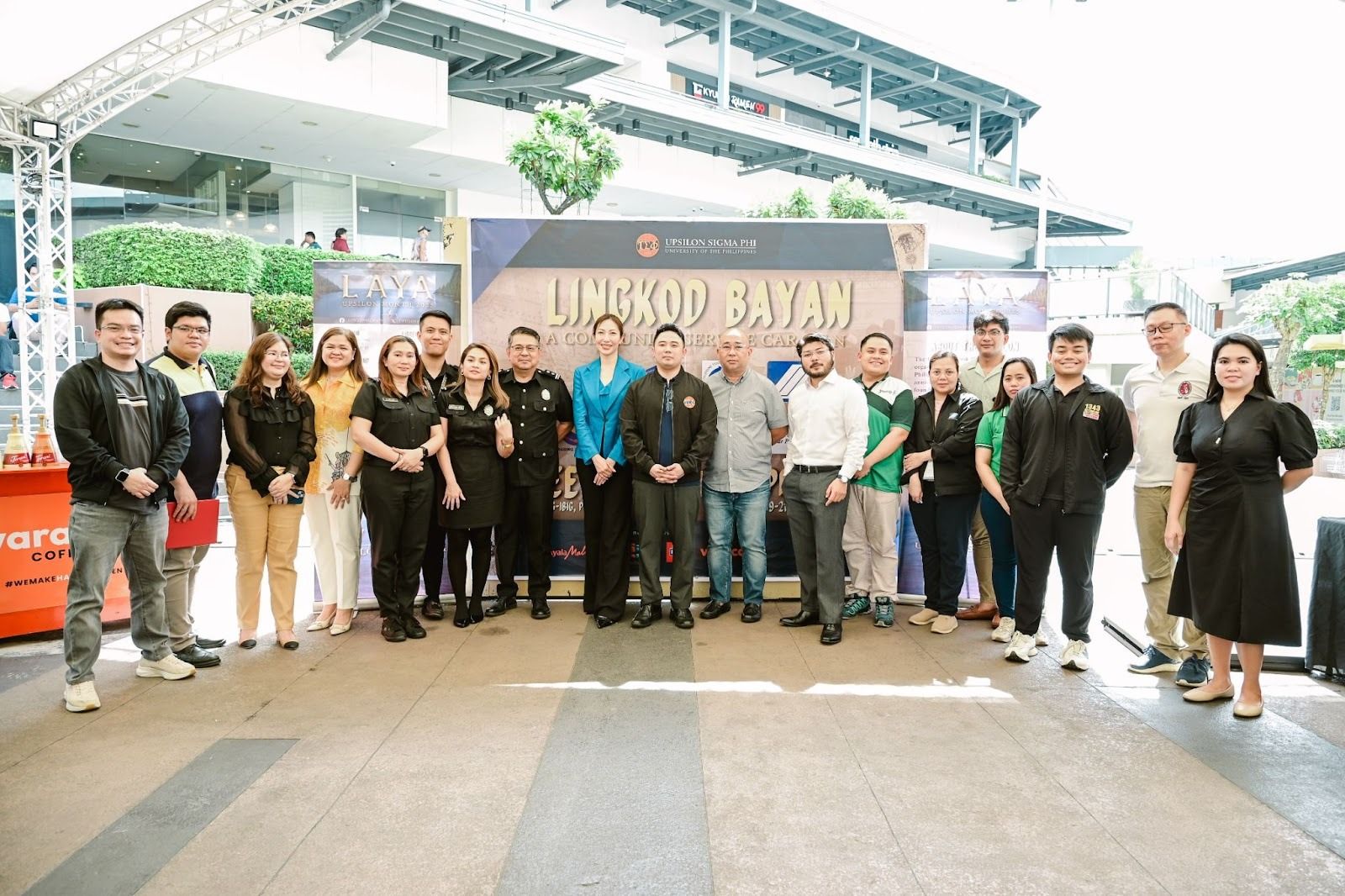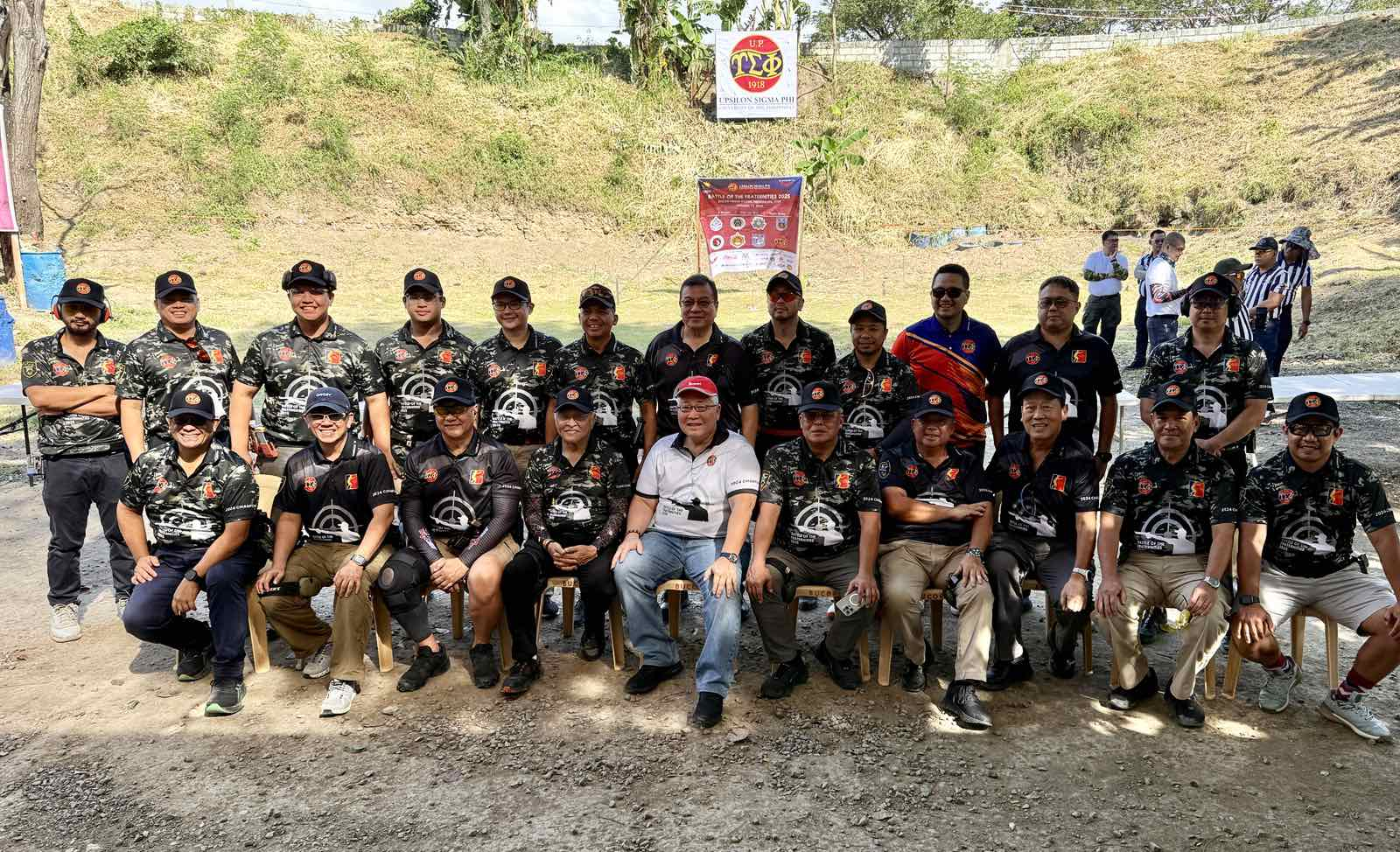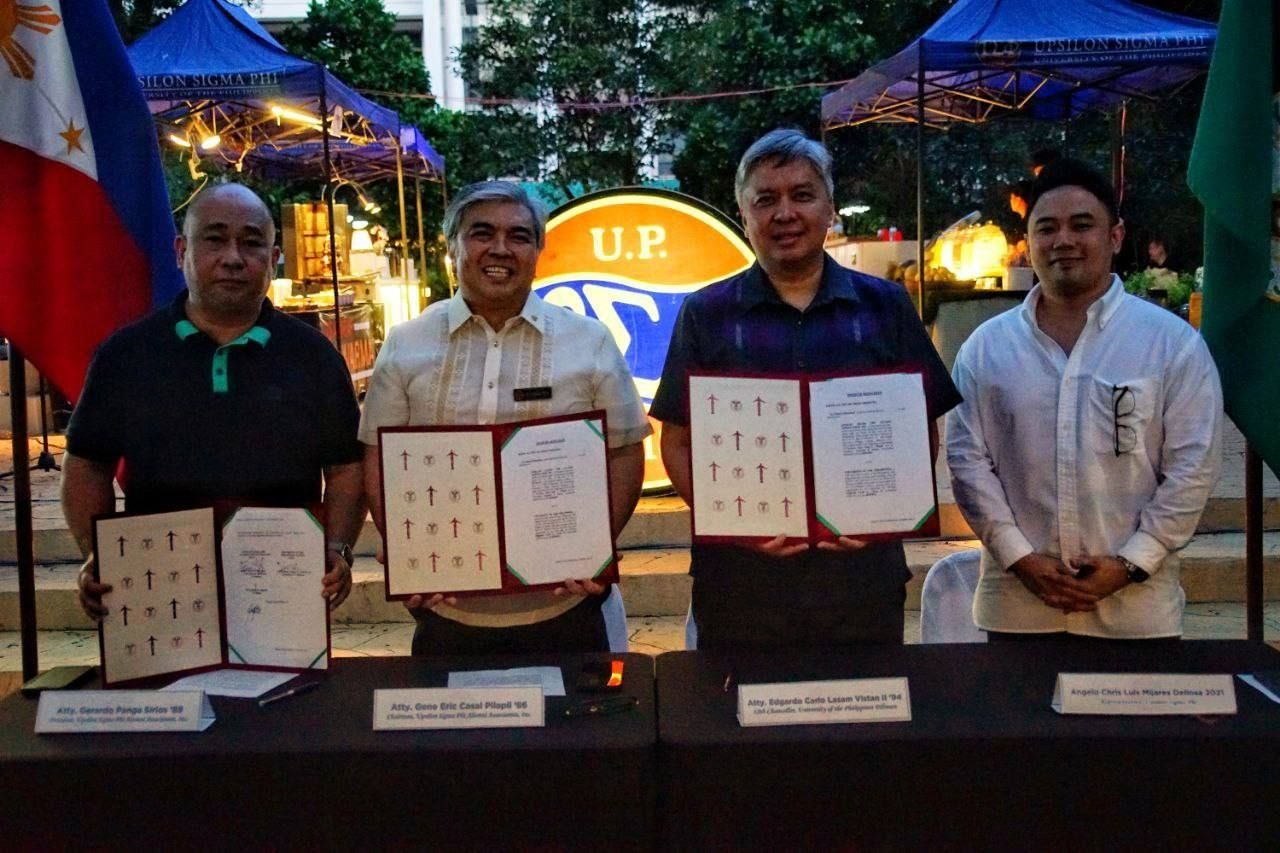Arts
Coffee with Danger

Under the stars of White Beach, Robby Sanchez ’91 spun tracks that turned Boracay nights electric. His sets blended chill synths with deep bass—music that made you feel like you were floating in a lucid dream. His playlist included Cafe Del Mar classics such as Jose Padilla’s Adios Ayer, easing later into tracks like Bonnie Bailey’s Ever After—a transition that still makes him chuckle.
Living on the edge, he became Danger.
The owner of a professional light and sound firm and an art gallery, Danger played the top clubs and toured the country with the celebrity set—models and actresses who ogled while he spun vinyl, and showbiz personalities who ribbed him as he napped in airports after nights that never seemed to end.
All these, however, stopped when his heart could no longer keep up.
“I had to drop music because of stress, can't do nightlife,” Danger said, acknowledging that his heart surgery prompted him to slow down.
He had five stents placed in his heart one day in 2012. Another four were put in seven days later.
“I had gout on the second operation. ‘Doc, wag n’yong hawakan paa ko. May gout ako’,” Danger recalled telling his surgeons, who had a good laugh at the patient who was having heart surgery but worried about the pain in his lower limbs.
“My life is a movie,” he added, stressing the mix of comedy and tragedy in his adventure.
For more than a decade now, Danger goes to bed early and rises with the sun. There was a time when he would post live videos of his early morning walks and his staple breakfast of pancakes and coffee at the McDonald’s near his house every day. Bright and sunshiny, he has become?
Probably. But he still is Danger.
In the early 2010s, Danger met Leonard Hilton McGurr, who came to the Philippines to give an art talk. Not a stranger to art and artists, Danger went to listen to the graffiti painter better known at that time as Futura 2000.
“I met this guy around 2013 or 2014. His name is Lenin, also known as Futura 2000. I made him my first portrait,” Danger said.
Futura painted graffiti in the New York City subways in the 1970s, before his work was exhibited alongside that of prominent artists such as Jean-Michel Basquiat, Keith Haring, and Kenny Scharf. But it must have been his graffiti roots that drew Danger to the artist who once collaborated with the punk group The Clash, working on their album covers and graphics at concerts.
“I had pieces which featured astronauts in sneakers. That’s what we saw on MTV in the '90s. Music was still an influence,” Danger said. Danger paints in his studio listening to 1980s New Wave, New Order in particular. “I listen even to new music,” he added. When he’s doing portraits at the neighborhood coffee shop in San Juan, Danger puts his earphones on to continue enjoying the music.
“I love Sid Vicious’ ‘My Way’,” Danger said, referring to the Frank Sinatra classic given angry lyrics and riffs by the Sex Pistols bassist. “That’s my life’s theme."
When Danger showed Futura his portrait, the graffiti artist had this to say: “Disturbing.”
“I would not have continued if he said my work was nice,” Danger said.
Bringing his portrait of Futura in his distinct abstract style with pronounced lines and exaggerated features in shades of yellow, blue, red, and black to the Dugout – a bar and restaurant owned by Jimbo Jimenez ’87 and frequented by Upsilonians in the 2010s – Danger wowed the fellows.
“Paint me too,” Ting Velasco ’87 told him.
Thus, Danger’s foray into immortalizing Upsilonians in portraits started. The first ones to have their faces on his canvas were the ones he lovingly called “the Dugout boys.” They include Mannix Manalo ‘87, Jorenz Tañada ’92, and the late Bage Pernia ’92.
As it was in the past, the Upsilon brothers were there to encourage him in the new endeavor, even when one can’t say in words what he has on canvas.
“I think it was Jorenz, when he was asked to describe my work, who said, ‘It is what it is.’ It’s sort of in your face,” Danger said.
“I am where I am because of brods. The friends I made since 1991. Joining the frat is the best decision I made,” he added.
And in the decade when the fraternity will mark its 100th year in 2018, Danger in earnest started painting the portraits of 100 Upsilonians. He would post some of the art pieces on his Facebook page before he would give them to his fellows. Still, he was no longer able to keep track of the first hundred.
“I gave them to the brods, and I wasn’t able to keep count,” Danger said.
Danger didn’t stop painting the brods after the centennial. Halfway through 2025, Danger said there must be more than 300 portraits of Upsilonians by his hands.
“Masaya,” Danger said when asked what he feels whenever brods on his art receive their portraits with wide eyes, toothy smiles, and vigorous handshakes.
“It’s worth it. You feel the brotherhood,” Danger said.
Danger would get involved in the fraternity’s contributions of art to the University of the Philippines. He pitched the idea to the late Keats Yapchiongco ’87 of the “Kapit-kapit Monument” – a sculpture of 14 human figures with interlocking arms and a space for a 15th – which was built in the University of the Philippines at Los Baños in time for the 100th year festivities.
“All of us in the frat memorized 14 founders, and all of us know why the No. 15 is unforgettable,” Danger said with a smile when asked about the inspiration behind the art piece, which is now a landmark in UPLB.
During the pandemic, Danger on behalf of the fraternity honored the health workers who were risking their lives and even those of their families by staying in the hospitals attending to the patients sick with COVID-19. He had been commissioned to do a few artworks for the Philippine General Hospital, but went on to paint the iconic and historic pieces even after he was told there were no more funds for his creations.
“I told the brods, ‘Don’t worry about me.’ I’m okay. I have finished the artwork, and you can have them put up in the PGH,” Danger said, recalling the time when the resources had to be used for more pressing needs during the global health emergency.
Danger had his heart surgery at the PGH.
“This is the best feeling. I want to do it again,” he said.
Danger is particularly proud of the mural he did for the community in Roxas, Capiz, in 2022. An Upsilonian wanted to give something back to the city by way of a sculpture, and Danger was at the top of his mind following the establishment of the monument in UPLB. Months of back-and-forth, however, prompted Danger to propose a mural instead. “Do you have a wall?” Danger asked the brod.
And what a wall the fellow had. The result was a mural, 15 feet tall and over 300 feet wide. Calling it an artwork would be a disservice, as it was massive.
Danger had a team of 21 – seven from his gallery and 14 from among the local artists, who all contributed thousands of brush strokes to depict, among others, a fisherman at work, galloping horses, and a young woman with butterflies behind her.
Danger is nowhere close to finished.
“Like the frat, the Kapit-kapit monument and the paintings at the PGH will still be there long after we are gone,” Danger said. “What else is there to do?” he added, hinting at more ideas the Upsilon can give the University.
Danger shared his idea of two structures – one taller than the other – symbolic of a father and son. One will have Rudyard Kipling’s If. The other, the Upsilon Credo. “I hope another brod will have the vision and take up the project. I will be there to help,” Danger said.
Danger now spends his mornings at his favorite coffee shop, painting portraits of people passing, characters from his favorite Korean series, and sometimes feminine figures from a show the night before. “I have to paint something every day. If not, I will feel useless,” Danger said.
Nowadays, he doesn’t just drink coffee. He uses them to paint portraits on his paper.
Why coffee?
“It’s for fellowship, for sharing stories. It’s also not too expensive,” Danger said.
Danger said coffee is a means of deepening ties and forging bonds through conversation. And make the portraits of the fellows more meaningful for him, the artist, and the subject.
“Igagawa kita ng art. Ilibre mo naman ako ng kape,” he jokes.
About the Author
N.D. Bordadora '92
N.D. Bordadora ’92 is a journalist who has covered law enforcement, the local governments, executive departments, the judiciary, both houses of Congress, and Malacañang for the country's top newspaper from 1997 to 2014. He is now a managing editor for an online news outfit.


